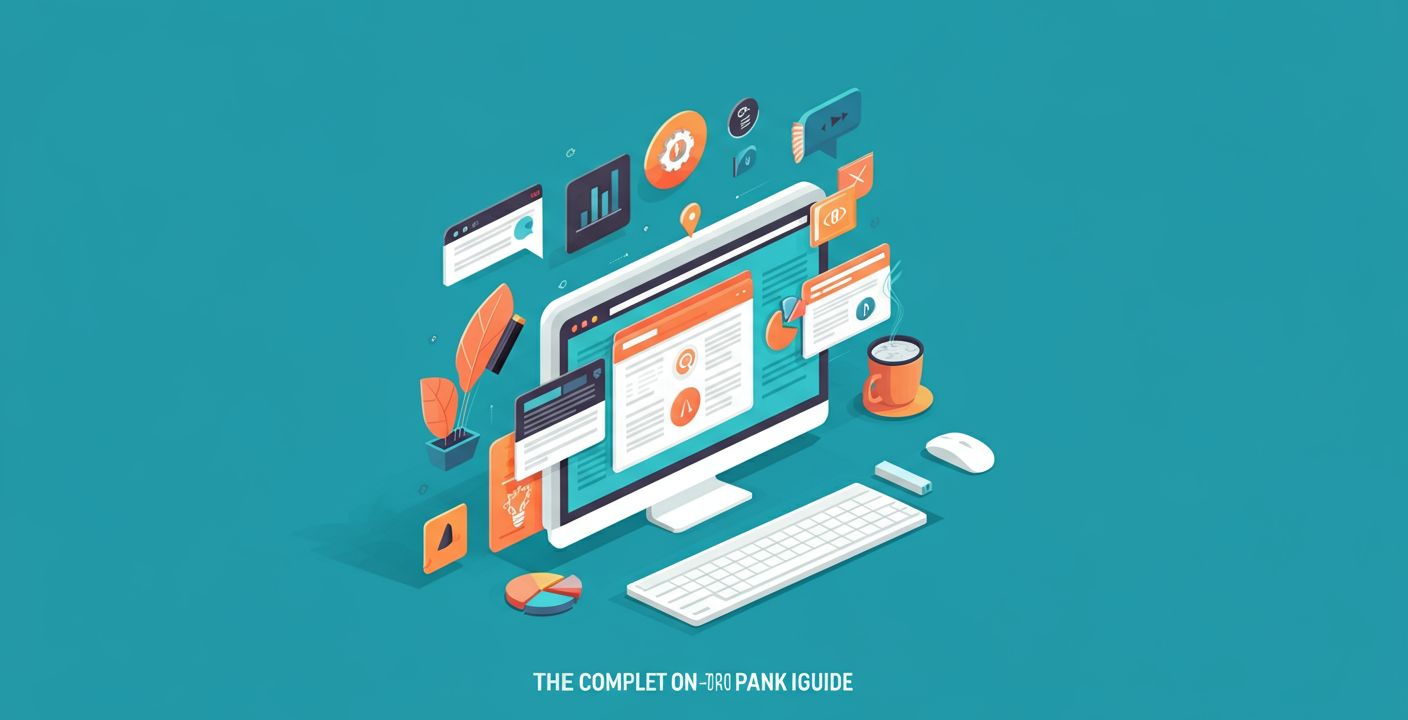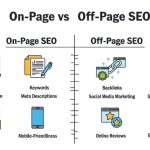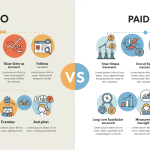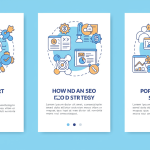
Search engines process over 8.5 billion searches daily, yet most websites fail to capture their fair share of this massive opportunity. The difference between ranking on page one versus page two can mean the difference between thriving online or remaining invisible to potential customers.
On-page SEO represents the foundation of any successful search strategy. Unlike off-page factors you can’t directly control, on-page optimization puts the power squarely in your hands. This comprehensive guide will walk you through every essential element of on-page SEO, from basic title tag optimization to advanced technical considerations that can propel your content to the top of search results.
Understanding On-Page SEO Fundamentals
On-page SEO encompasses all optimization techniques applied directly to your website pages to improve their search engine rankings. These elements signal to search engines what your content covers and how valuable it is to users searching for specific information.
The practice extends far beyond simply stuffing keywords into your content. Modern on-page SEO requires a strategic approach that balances search engine requirements with user experience expectations. Search engines have evolved to prioritize content that genuinely serves user intent while meeting technical performance standards.
Effective on-page optimization creates a symbiotic relationship between your content and search algorithms. When executed properly, it helps search engines understand your content’s relevance while ensuring visitors find exactly what they’re looking for.
Title Tags and Meta Descriptions
Title tags serve as the clickable headline for your page in search results. They represent one of the most critical on-page SEO elements, directly influencing both rankings and click-through rates. To dive deeper into how title tags fit into the broader technical landscape, explore our Complete Guide to Technical SEO Services.
Crafting Compelling Title Tags
Your title tag should accurately describe your page’s content while incorporating your primary keyword naturally. Keep titles under 60 characters to ensure they display fully in search results. Place your most important keywords toward the beginning of the title, as search engines give greater weight to terms that appear early.
Avoid keyword stuffing in titles, which can harm your rankings and reduce user trust. Instead, focus on creating titles that users actually want to click. Include power words like “complete,” “ultimate,” or “essential” when appropriate, but only if they accurately reflect your content’s comprehensiveness.
Writing Effective Meta Descriptions
Meta descriptions don’t directly impact rankings, but they significantly influence click-through rates. These 155-character snippets appear below your title in search results, serving as your content’s sales pitch to potential visitors.
Write meta descriptions that clearly explain what users will find on your page. Include your primary keyword naturally while focusing on the value your content provides. Use action-oriented language that encourages clicks, such as “discover,” “learn,” or “find out.”
Header Structure and Content Organization
Proper header structure creates a logical content hierarchy that benefits both users and search engines. Headers break up long blocks of text while signaling the relative importance of different content sections.
Implementing Header Hierarchy
Use only one H1 tag per page, typically for your main headline. This header should include your primary keyword and clearly indicate your page’s main topic. Subsequent headers (H2, H3, etc.) should follow a logical sequence that guides readers through your content.
H2 tags work well for main sections, while H3 tags can highlight subsections within those areas. Avoid skipping header levels, as this can confuse both users and search engines about your content’s structure.
Strategic Keyword Placement
Include relevant keywords in your headers naturally, but prioritize readability over keyword density. Headers should accurately describe the content that follows while incorporating variations of your target keywords where appropriate.
Long-tail keywords often work well in H2 and H3 tags, as they tend to be more specific and naturally fit into descriptive subheadings. This approach helps you target multiple related search terms while maintaining a clear content structure.
Content Quality and Keyword Optimization
High-quality content forms the backbone of effective on-page SEO. Search engines increasingly prioritize content that thoroughly addresses user queries while providing genuine value.
Creating Comprehensive Content
Thorough content that covers topics in depth tends to rank better than superficial articles. Research your topic extensively and address related questions your audience might have. This approach naturally incorporates semantic keywords that search engines use to understand your content’s context.
Focus on solving real problems for your audience rather than simply targeting specific keywords. When you create genuinely helpful content, keyword integration becomes more natural and effective.
Optimizing Keyword Density
Modern SEO doesn’t require specific keyword density percentages, but you should include your primary keyword several times throughout your content. Use variations and synonyms to avoid repetition while covering related concepts.
Include your primary keyword in the first paragraph, at least one header, and naturally throughout the body text. However, never force keywords into places where they don’t belong, as this can harm both user experience and rankings.
Technical On-Page Elements

Technical optimization ensures search engines can properly crawl, index, and understand your content. These behind-the-scenes elements significantly impact your search performance.
URL Structure Optimization
Clean, descriptive URLs help both users and search engines understand your page’s content. Include your primary keyword in the URL while keeping it concise and readable. Avoid unnecessary parameters, numbers, or special characters that don’t add value.
Use hyphens to separate words in URLs rather than underscores or spaces. This format is easier for search engines to parse and more user-friendly when shared across platforms.
Image Optimization
Images enhance user experience but can slow page loading if not properly optimized. Compress images to reduce file sizes without significantly impacting quality. Use descriptive filenames that include relevant keywords rather than generic names like “image1.jpg.”
Alt text provides crucial context for search engines and accessibility tools. Write descriptive alt text that explains what the image shows while incorporating keywords naturally. This practice improves both SEO and website accessibility.
Page Loading Speed and Performance
Site speed directly impacts both user experience and search rankings. Search engines favor fast-loading pages because they provide better user experiences.
Optimizing Loading Times
Minimize HTTP requests by combining CSS and JavaScript files where possible. Enable browser caching to reduce loading times for returning visitors. Choose a reliable hosting provider that can deliver your content quickly to users worldwide.
Consider implementing a content delivery network (CDN) to serve your content from servers closer to your users’ locations. This can significantly reduce loading times, especially for users far from your main server.
Mobile Performance Optimization
Mobile-first indexing means Google primarily uses your mobile site version for ranking and indexing. Ensure your mobile site loads quickly and provides an excellent user experience across all devices.
Test your mobile site regularly using tools like Google’s Mobile-Friendly Test. Address any issues that could impact mobile performance, such as large images or poorly optimized code.
Internal Linking Strategy
Strategic internal linking helps search engines understand your site’s structure while guiding users to relevant content. Well-planned internal links can distribute page authority throughout your site and improve overall rankings.
Creating Effective Link Networks
Link to related content within your site using descriptive anchor text that includes relevant keywords. This practice helps search engines understand the relationship between different pages while encouraging users to explore more of your content.
Avoid over-optimization by using varied anchor text and linking naturally within your content. Focus on providing value to users rather than trying to manipulate search rankings through excessive internal linking.
Optimizing Link Distribution
Ensure important pages receive adequate internal links from other relevant pages on your site. This helps search engines understand which pages you consider most valuable while improving the likelihood that users will discover your key content.
User Experience Signals
Search engines increasingly consider user experience signals when determining rankings. These metrics reflect how users interact with your content and can significantly impact your search performance.
Improving Engagement Metrics
Create content that encourages users to spend time on your site and explore multiple pages. Use clear formatting, engaging visuals, and logical content structure to keep users engaged throughout their visit.
Address user intent comprehensively to reduce bounce rates and increase time on page. When users find exactly what they’re looking for, they’re more likely to engage with your content and potentially convert into customers.
Enhancing Accessibility
Accessible websites provide better experiences for all users while meeting search engine guidelines. Use proper heading structure, descriptive link text, and sufficient color contrast to ensure your content is accessible to users with disabilities.
Screen reader compatibility and keyboard navigation support can improve both accessibility and SEO performance. These features help search engines better understand and index your content.
Taking Your On-Page SEO to the Next Level
On-page SEO success requires consistent attention to detail and regular optimization efforts. Start by implementing the fundamental elements covered in this guide, then gradually incorporate more advanced techniques as you become comfortable with the basics.
Regular monitoring and adjustment ensure your on-page SEO remains effective as search algorithms evolve. Use tools like Google Search Console to track your performance and identify optimization opportunities.
The investment in comprehensive on-page SEO pays dividends through improved search visibility, increased organic traffic, and better user engagement. By focusing on creating valuable content that’s properly optimized for search engines, you’ll build a strong foundation for long-term online success.
Remember that on-page SEO is an ongoing process rather than a one-time task. Stay current with best practices, monitor your results, and continuously refine your approach based on performance data and user feedback.














No Comments